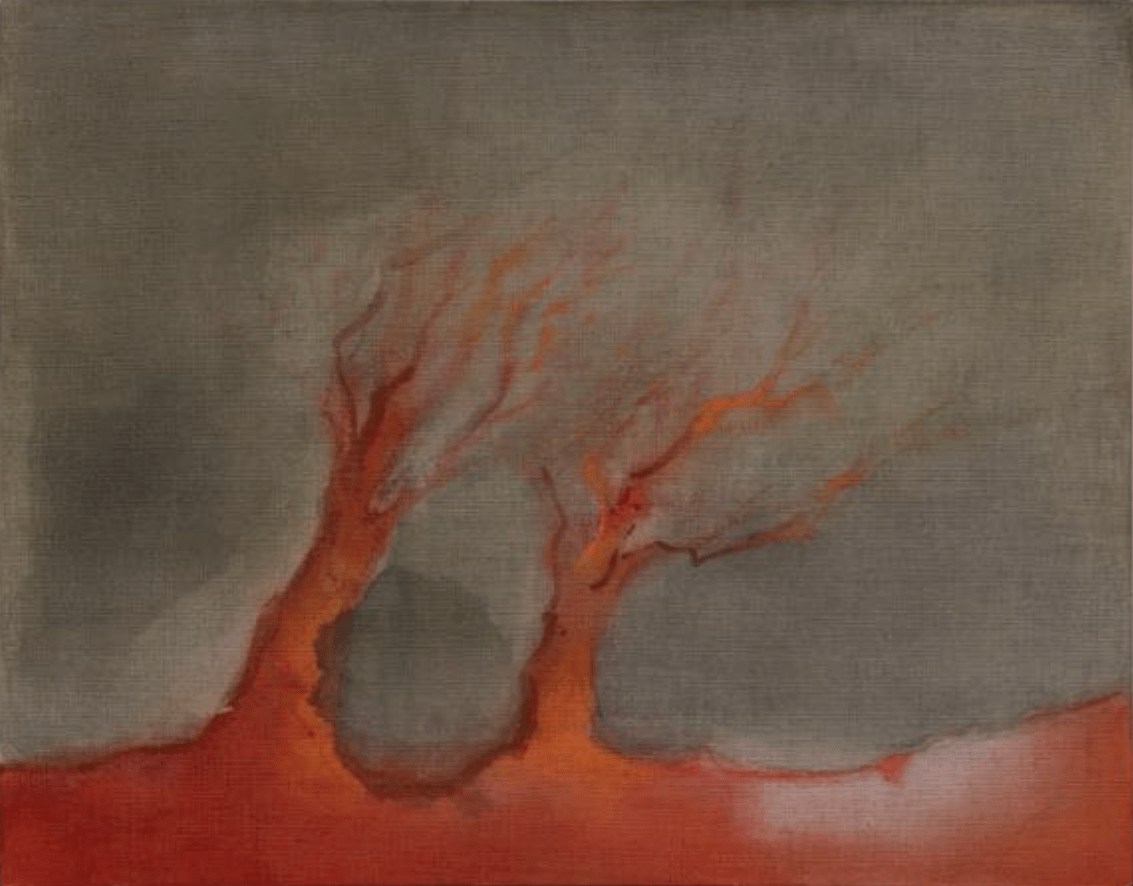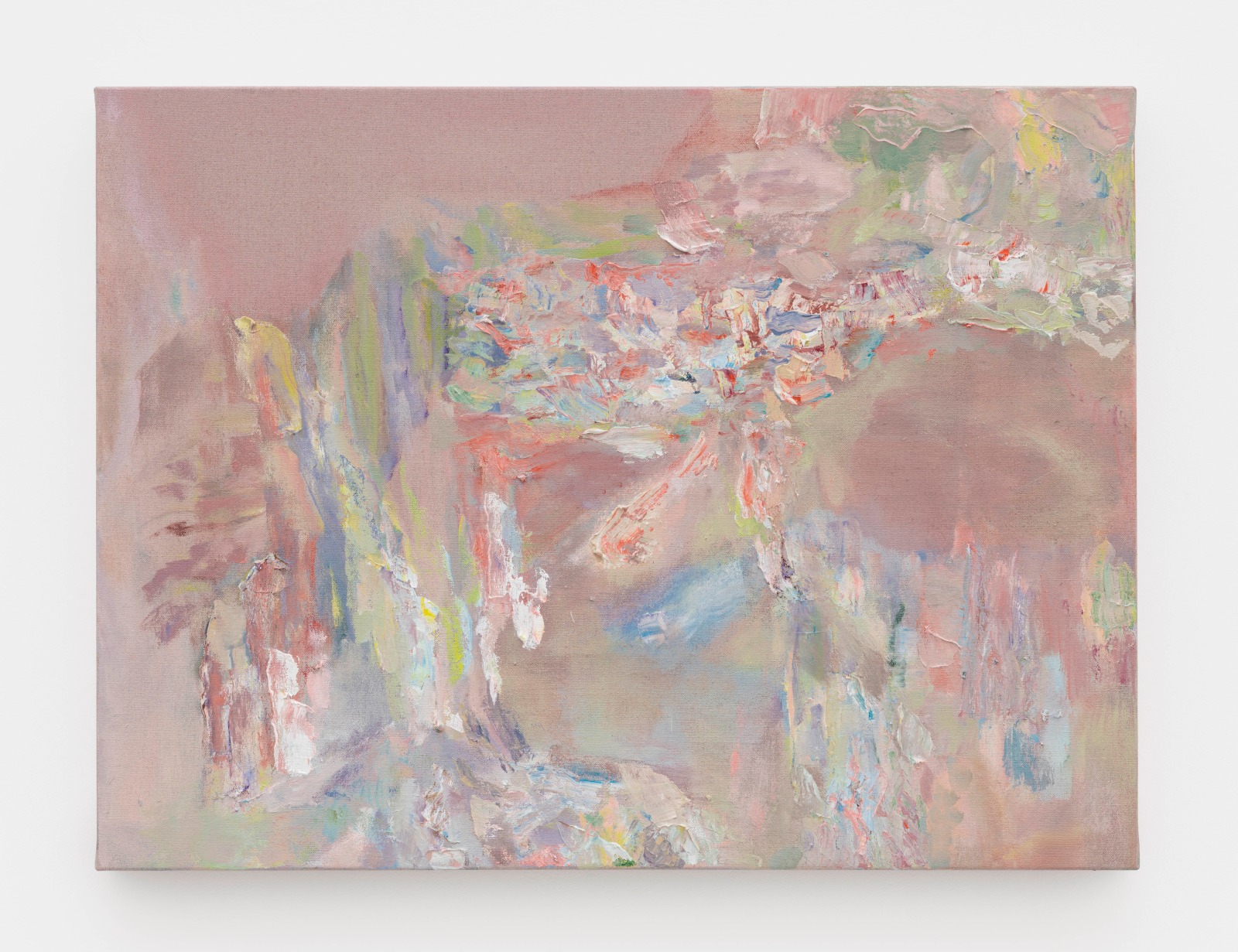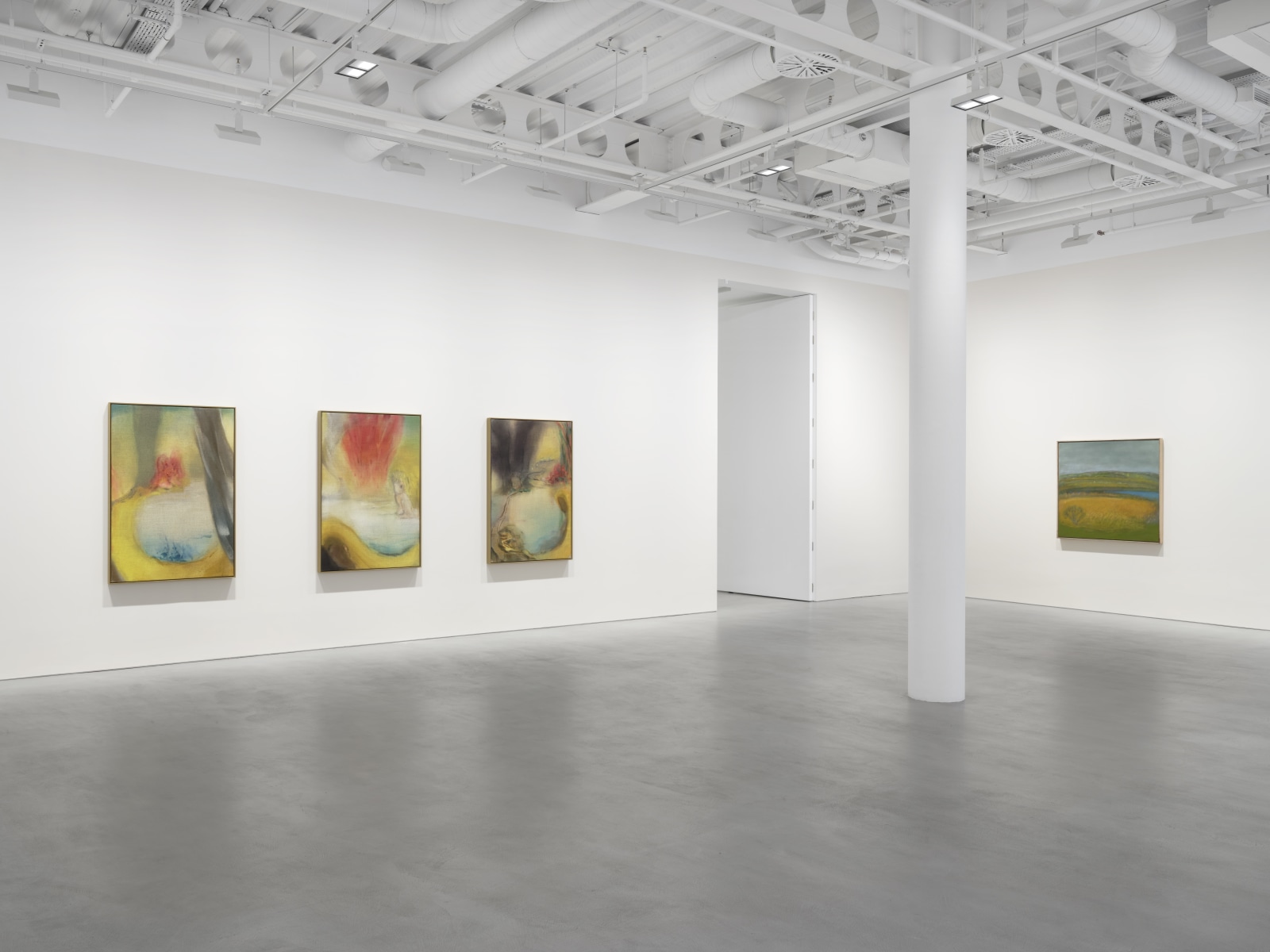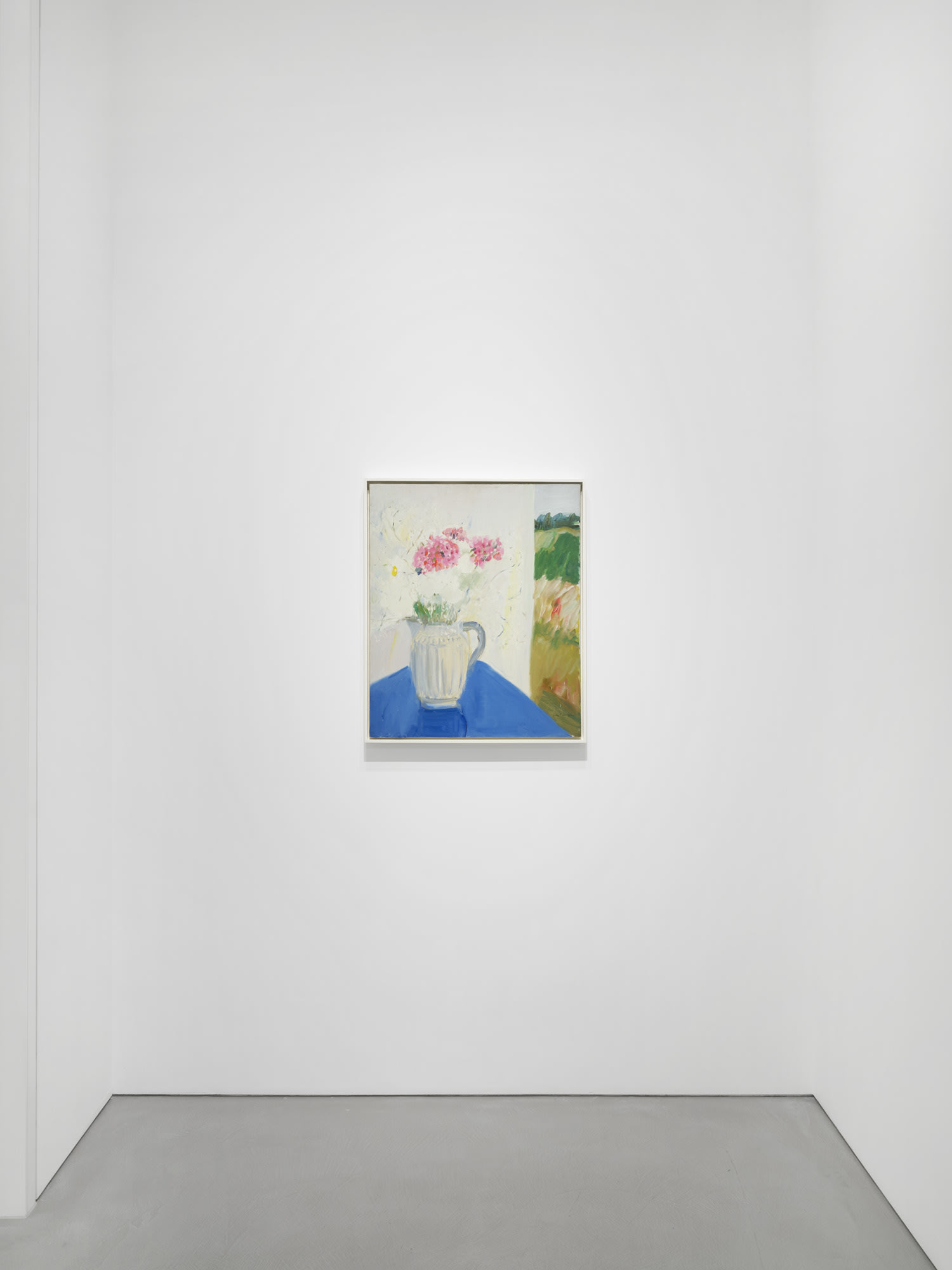
Conduit Street
24.07 - 21.09.2024
Nature Painting Nature
curated by Lydia Yee
/
Text by Lydia Yee
Pilar Corrias is pleased to present Nature Painting Nature, a group exhibition guest curated by Lydia Yee, featuring works by Jordan Casteel, Jane Freilicher, Grace Hartigan, Leiko Ikemura, Francesca Mollett, Sabine Moritz and Vivien Zhang.
Nature Painting Nature takes a multigenerational look at artists for whom nature and its subjects offer a way to translate personal experience, memory and direct observation into paint. It takes as a starting point Frank O’Hara’s essay, ‘Nature and New Painting’ (1954), focusing on a generation of New York School painters who filtered their experience through natural subject matter, in contrast to the transcendent approach of their Abstract Expressionist peers. ‘There is a kind of painting’, O’Hara writes, ‘which looks to be about nature but is lacking in perceptions of it. Here the painter utilises his visual experience for subject matter, but his experience is the subject, nature is not, and therefore the structure we observe is that of his experience rather than of what he has experienced.’(1)
The exhibition features work by Jane Freilicher and Grace Hartigan, both of whom are discussed in O’Hara’s essay. Freilicher’s paintings appear to be rooted in representation, notably in still life and landscape, but she aligns her concerns with ‘an inner impulse that wants to be expressed or a sensation of colour or atmosphere or arrangement of shapes’.(2) Freilicher frequently employed the device of a still life adjacent to a window framing the view beyond, as in Blue Table (1966). The left side of the canvas is filled by pink blossoms and spiky green shoots, emerging from a large rustic pitcher on a sharply-angled blue table that pushes up against the narrow landscape represented by brushy bands of horizontal colour to the right. This approach of mixing abstraction and representational elements is shared by her second-generation Abstract Expressionist peer Hartigan, whose Tide Pool (1972) blends watercolour and collage, taking the shapes of gastropods, algae and other marine life, all intermingling between shards of blue. ‘I perceive the world in fragments’, Hartigan noted. ‘Somehow, in painting I try to make some logic out of the world that has been given to me in chaos.’(3)
In recent decades, artists have looked to nature to express personal and cultural narratives. Drawing on both Eastern and Western painting traditions, Leiko Ikemura’s trio of paintings Lake Biwa (2019–20) takes inspiration from a large freshwater lake near Kyoto, not far from where the artist was born. Ikemura’s fluid, transcultural landscapes echo the natural cycle of life: ‘I like the rhythm of the landscape, it feels like waves. The earth is undulating, changing always.’(4) In Ikemura’s Trees (2013), lifeblood courses from the earth into two trees which, despite being bereft of leaves, dance in the wind.
In Sabine Moritz’s still life, Chrysanthemums and Dragon (2015) two pervasive motifs in East Asian art and culture emerge from flecks of pink and red. Moritz’s Deception Island I (2015) depicts a wintery seascape with the mountainous backdrop of a volcanic island in Antarctica. Describing this tension between abstraction and landscape, Moritz has stated: ‘It’s like there are two banks, figuration on one side and abstraction on the other, and a river between. The river is obstinate. It takes time to cross.’(5)
The recent turn toward landscape, still life and botanical subjects by a younger generation of artists signals a renewed interest in finding one's place within the world, and by extension, painting. Francesca Mollett's recent canvases distil observations, recorded in drawings and notes, of natural phenomena often encountered during walks along the edge of rivers. In her painting, Nacre (2024), she sought to capture the iridescence of mother-of-pearl or the shimmering of spindrift by creating a 'shifting feeling in the surface of the painting through colour'.(6)
Jordan Casteel’s recent paintings – which can be viewed as self-portraits – are based on the seasonal blooms in her garden in the Catskill region in New York, where she has recently relocated from New York City. Three salmon pink blooms in Lupine (2024) emerge from the foreground against an abstract field of green that separates them from the honeysuckle in the background. ‘I see my own labour in it’, Casteel affirms. ‘It’s not about observing the things that are most true for you in this moment. It’s about observing the things that were most true for me.’(7)
Vivien Zhang mixes painterly and graphic languages in a group of small paintings depicting the individual blooms and seeds of a tree native to southern China. The plant, Sterculia lanceolata, has the prefix 'pseudo-' in its common name in Chinese, marking it out as inauthentic. This confusion around authenticity is, however, liberating for Zhang: 'I'm not as interested in the singular image of a painting, but rather, how a painting is an assemblage of different elements/languages/registers.'(8)
Painting nature has a new relevance today. It creates a space of freedom between abstraction and representation, self-expression and observation. While these paintings might ostensibly be reflections on nature, they are even more so about the nature of painting itself.
1. Frank O’Hara, ‘Nature and New Painting’, in Donald Allen (ed.), Standing Still and Walking in New York, Bolinas, CA: Grey Fox Press, 1975, p.42.
2. Freilicher quoted in Nathan Kernan, ‘Jane Freilicher: The Interior Landscape’, in Jane Freilicher: ‘50s New York, New York: Paul Kasmin Gallery, 2018, n.p.
3. Hartigan quoted in Sara Pendergast and Tom Pendergast (ed.), Contemporary Artists: A-K, Detroit, MI: St James Press, 2002, p.680.
4. Sanne van de Kraats, ‘The Past is Now: In Conversation with Leiko Ikemura’, in Leiko Ikemura: Motion of Love, Zwolle, NL: Waanders Uitgevers and Museum de Fundatie, 2023, p.42.
5. Matthew Holman, ‘Sabine Moritz: “Everybody has an August, everybody has a midnight”’, Plaster Magazine, July 2023.
6. Conversation with the artist, 5 July 2024.
7. Casteel quoted in Sara Elise Patterson, ‘Jordan Casteel: the Acclaimed Painter of People – and Now Plants’, Kinfolk, 48, Summer 2023.
8. Conversation with the artist, 27 June 2024.
See also
Previous
Next


























